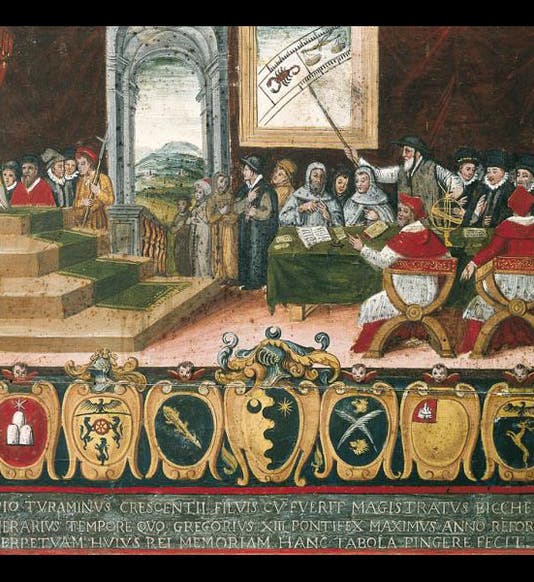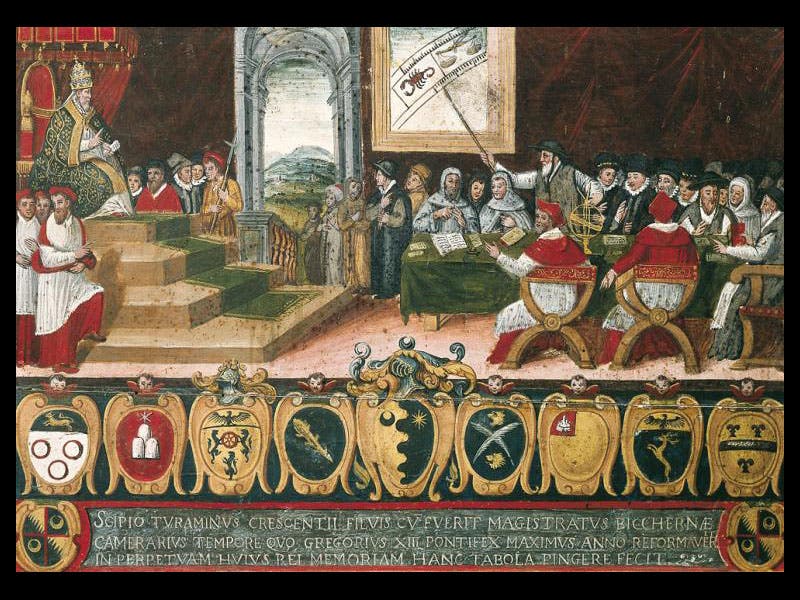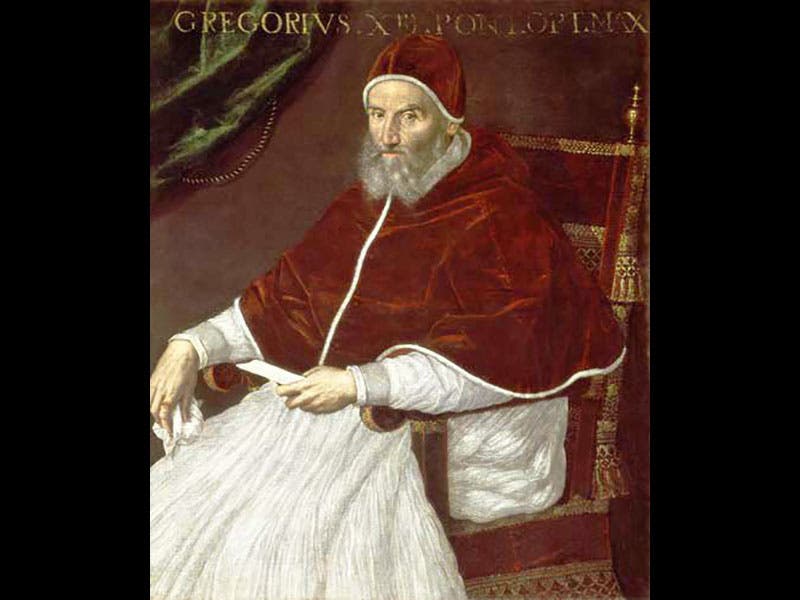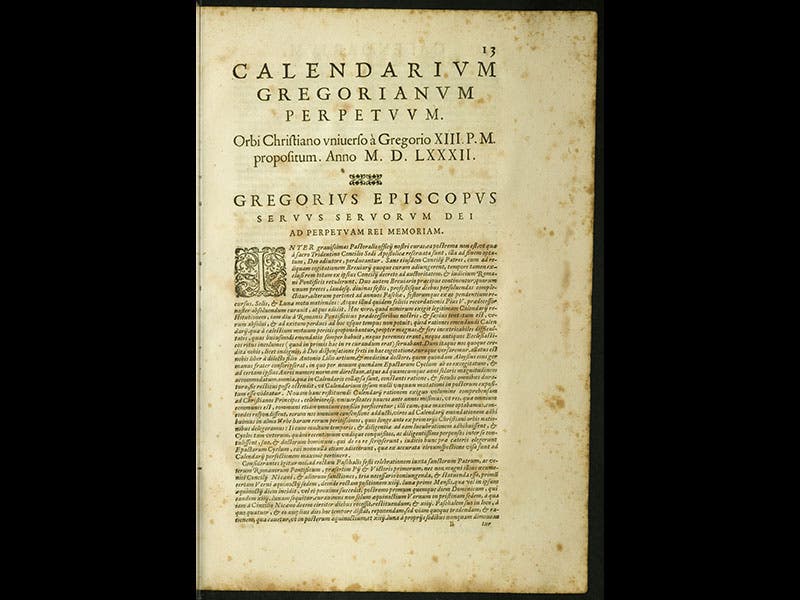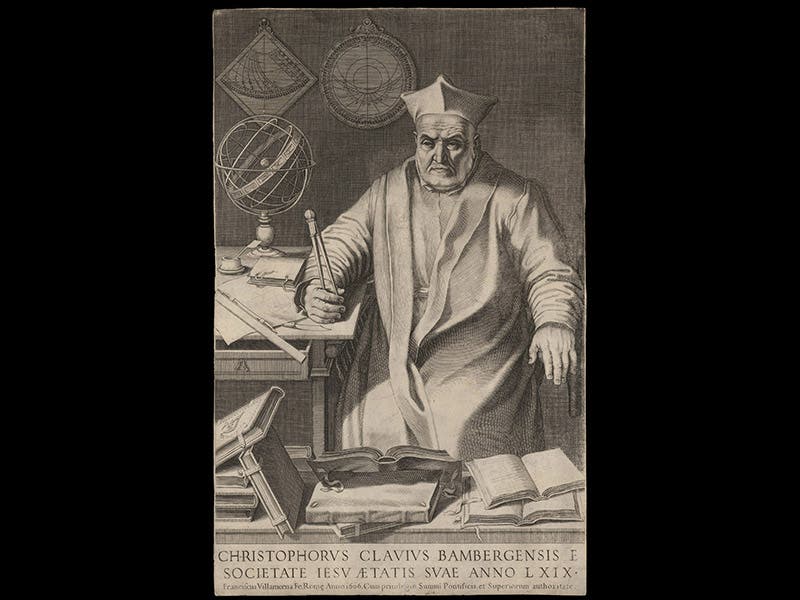Scientist of the Day - Pope Gregory XIII
On Feb. 24, 1582, Pope Gregory XIII issued a papal bull known as Inter gravissimas, which announced a reform of the calendar. The calendar in use was known as the Julian calendar and was built upon a year that was 365 1/4 days long. Since the year is in fact about 11 minutes shorter than that, the calendar had drifted with respect to the seasons, so that the first day of spring, the spring equinox, was now occurring about 10 days too early in the calendar. This meant that Easter, which is based on the spring equinox, was also occurring about 10 days too early. The Church had been considering reform for over a century, and astronomers such as Regiomontanus and Copernicus had been consulted for suggestions, but it wasn't until the 1570s that Aloysius Lilius, and after his death, Christoph Clavius, worked out the details of the reform that Gregory put into place in 1582.
The two most noticeable elements of the reform were that 10 days were removed from the calendar, beginning on Oct. 4, 1582, and that the beginning of the year was moved to Jan. 1. To keep the calendar in sync with the seasons, three leap years every 400 years were also to be removed, those in 1700, 1800, and 1900 (but not 1600 or 2000), making the effective length of the year 365 days, 5 hours, and 49 minutes, almost exactly right. The resulting calendar has been called the Gregorian calendar ever since. It took a long time for Protestant countries to accept a Catholic reform (England implemented the new calendar in 1752), but the Gregorian calendar is now in place in nearly every world nation. Except for the addition of an occasional leap-second, the need for further reform is not evident.
The images show, in order, a painting depicting Pope Gregory XIII (far left) being advised on the need for calendar reform; a portrait of Gregory XIII; the first page of the bull Inter gravissimas; and a portrait of Clavius, the principal scientific architect of the reform. We have Clavius’s massive book on the reform, part of his Opera (1612), in our collections.
Dr. William B. Ashworth, Jr., Consultant for the History of Science, Linda Hall Library and Associate Professor, Department of History, University of Missouri-Kansas City. Comments or corrections are welcome; please direct to ashworthw@umkc.edu.

